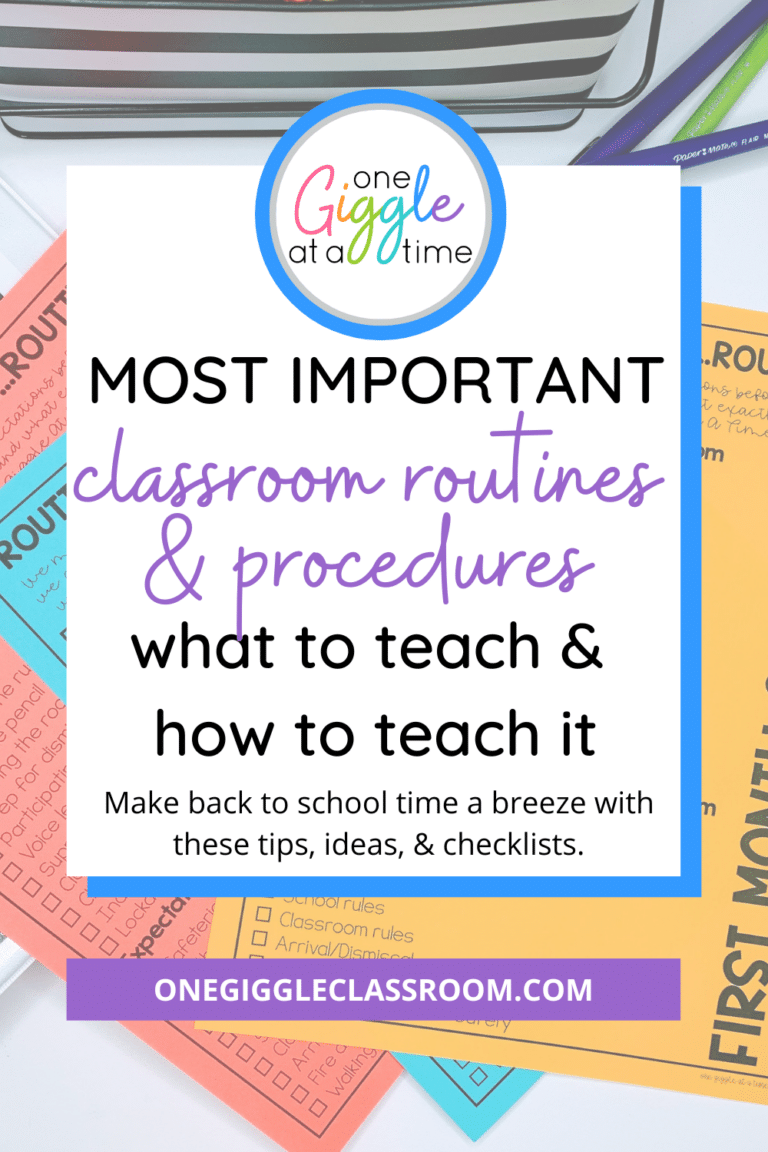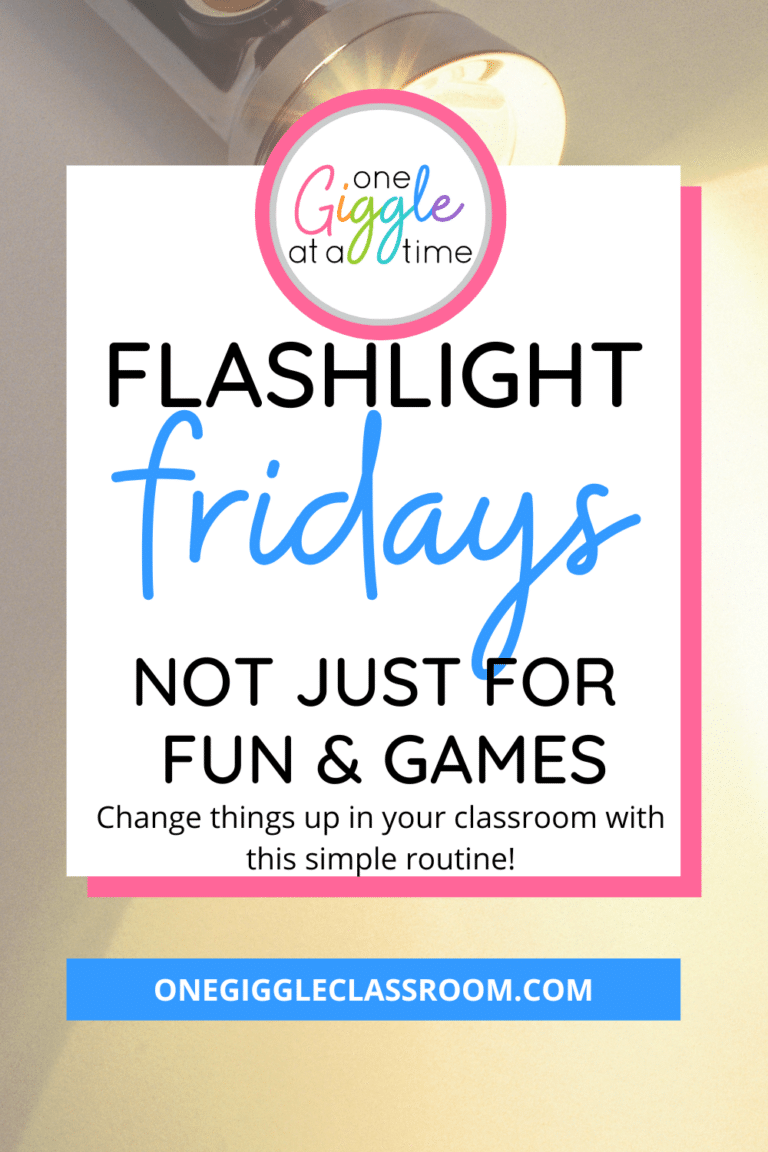
How To Easily Accommodate Students With Severe Food Allergies Into Your Classroom Community
Share This:

The rate of severe food allergies is on the rise! The latest statistics from FARE (Food Allergy Research and Education) report that approximately one in 13 children or roughly two kids in every classroom have severe food allergies. It is now necessary to understand these allergies and know how to incorporate them into your classroom.
Read on for valuable information about how to accommodate students with severe food allergies in your classroom community:

**Full disclaimer, I am NOT a medical professional, nor do I claim to have all the answers on this situation, but I myself suffer from some pretty severe allergies, AND I have taught many students with severe allergies over the years. So, between what I have learned from my own doctors, my students, their family members, the school nurses I have worked with, and my own experiences in the classroom, I have some insights I think are important to share with you on this subject.
Intro to Severe Food Allergies
A food allergy is a serious and sometimes life-threatening medical condition that affects 32 million Americans.
You should ALWAYS take food allergies seriously!
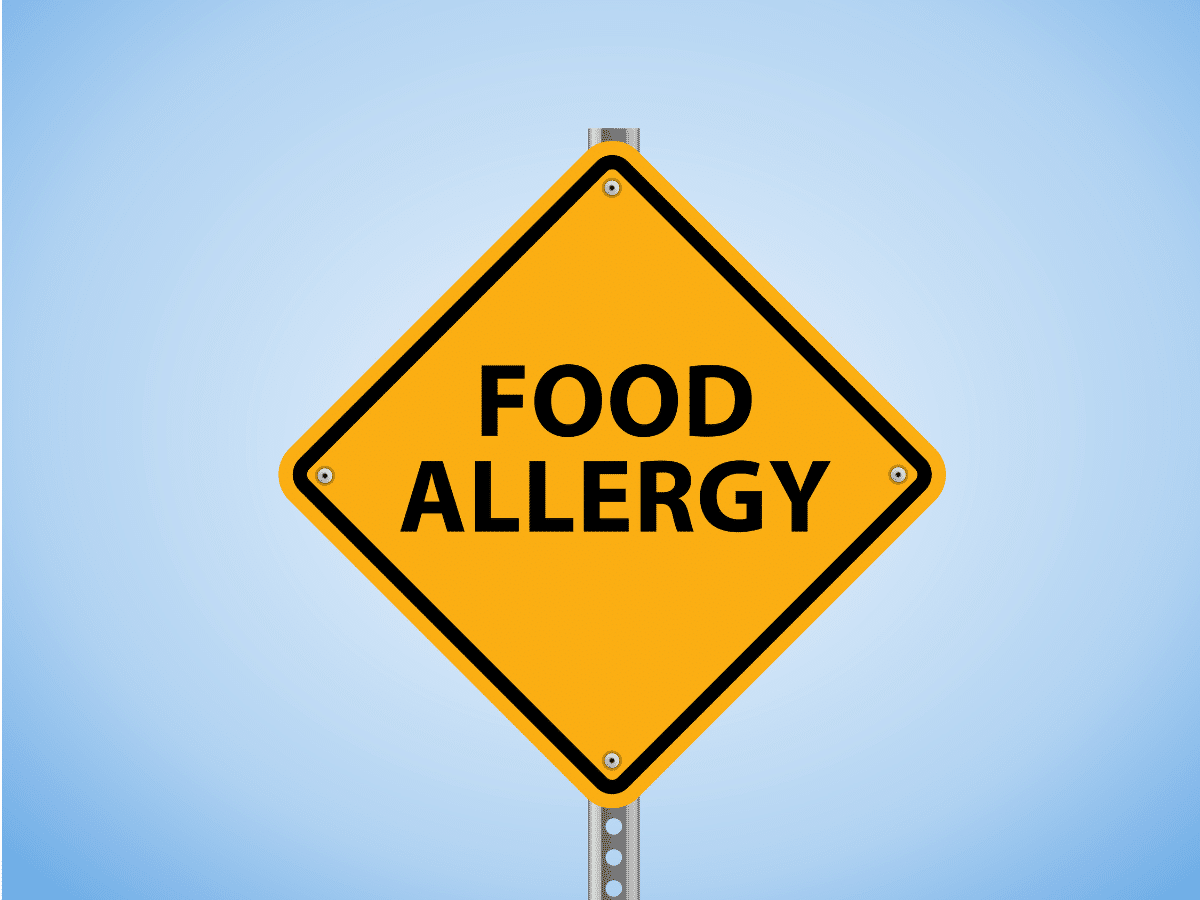
Persons with food allergies can have one or multiple food allergies. Their reactions to these can vary unpredictably. Mild reactions may involve minor hives or slight abdominal pain while severe reactions may include anaphylaxis.
Currently, there is no cure for food allergies. Avoiding these allergens is necessary for the health and well-being of your students living with this reality.
Food Allergy Statistics
According to FARE (Food Allergy Research and Education) 2022 facts and statistics:
- 1 in 13 children, or roughly 2 in every classroom have food allergies.
- More than 40% of those children with food allergies have experienced a severe reaction.
- Reports suggest that the majority of fatal food allergy reactions are triggered by food consumed outside the home.
- More than 15% of school-aged children with food allergies have had a reaction in school.
Chances are very good if you have not already had a student in your class with a severe food allergy, you eventually will.

Tips to Easily Accommodate Severe Food Allergies in Your Classroom Community
1. LEARN TO RECOGNIZE FOOD ALLERGIES IN CHILDREN.

FOOD ALLERGY SYMPTOMS CAN INCLUDE:
- swollen lips, tongue, or eyes
- itchiness, rash, or hives
- nausea, vomiting, or diarrhea
- congestion, hoarse voice, or trouble swallowing
- wheezing or difficulty breathing; dizziness, fainting, or loss of consciousness
- mood change or confusion
It is not only important to know what the possible symptoms of an allergic reaction are but also important to know how children might communicate that they are in distress.
CHILDREN HAVING A FOOD ALLERGY REACTION MIGHT COMMUNICATE THEIR SYMPTOMS IN THE FOLLOWING WAYS:
- “It feels like something is poking my tongue.”
- “My tongue (or mouth) is tingling (or burning).”
- “My tongue (or mouth) itches”.
- “My tongue feels like there is hair on it.”
- “My mouth feels funny.”
- “There’s something stuck in my throat.”
- “My tongue feels heavy.”
- “My lips feel tight.”
- “It feels like there are bugs in my ears.” (To describe itchy ears)
- “It feels like a bump is on the back of my throat.”
2. EDUCATE YOURSELF ABOUT YOUR STUDENT AND HIS/HER ALLERGY
When learning that you have a student in your class with a severe food allergy, it’s extremely beneficial to schedule a meeting with the student, their family, and the school nurse.
Take time to learn about your student and his/her allergy. Ask questions. Listen. Be open and understanding. Get everyone’s perspective so that you can make informed decisions going forward.

3. PREPARE FOR HOW TO RESPOND TO A FOOD ALLERGY EMERGENCY
Together with the school nurse and the family, determine what the child’s emergency plan will be if he/she has a severe allergic reaction while at school.
Consider:
- If an EpiPen is needed, learn how to administer the medication.
- Because it is not safe to send a student with a suspected allergic reaction to the school nurse alone, determine what the plan of action will be to get the child to the nurse, or the nurse to the child.
- And more
Have the emergency plan readily available for special teachers, substitute teachers, lunch staff, etc.

4. EDUCATE YOUR STUDENTS AND THEIR FAMILIES TO HELP PREVENT FOOD ALLERGY EMERGENCIES IN YOUR CLASSROOM
Teach your entire class about life-threatening food allergies at the beginning of the school year.
Use this opportunity to teach compassion, diversity, and problem-solving and highlight classroom community. It’s important to take care of classmates!
Use this social skills story to help explain severe allergies to your students. It is a great way to help make the students aware of:
- what it means to have severe allergies
- what a severe allergic reaction is
- what we can do to help our friends with severe allergies stay safe
After reading and discussing the story with your students, keep a copy of the book in your class library for the students to reread and refer back to. Also print out and laminate a small version of the book for the student with the allergy to keep for him/herself.
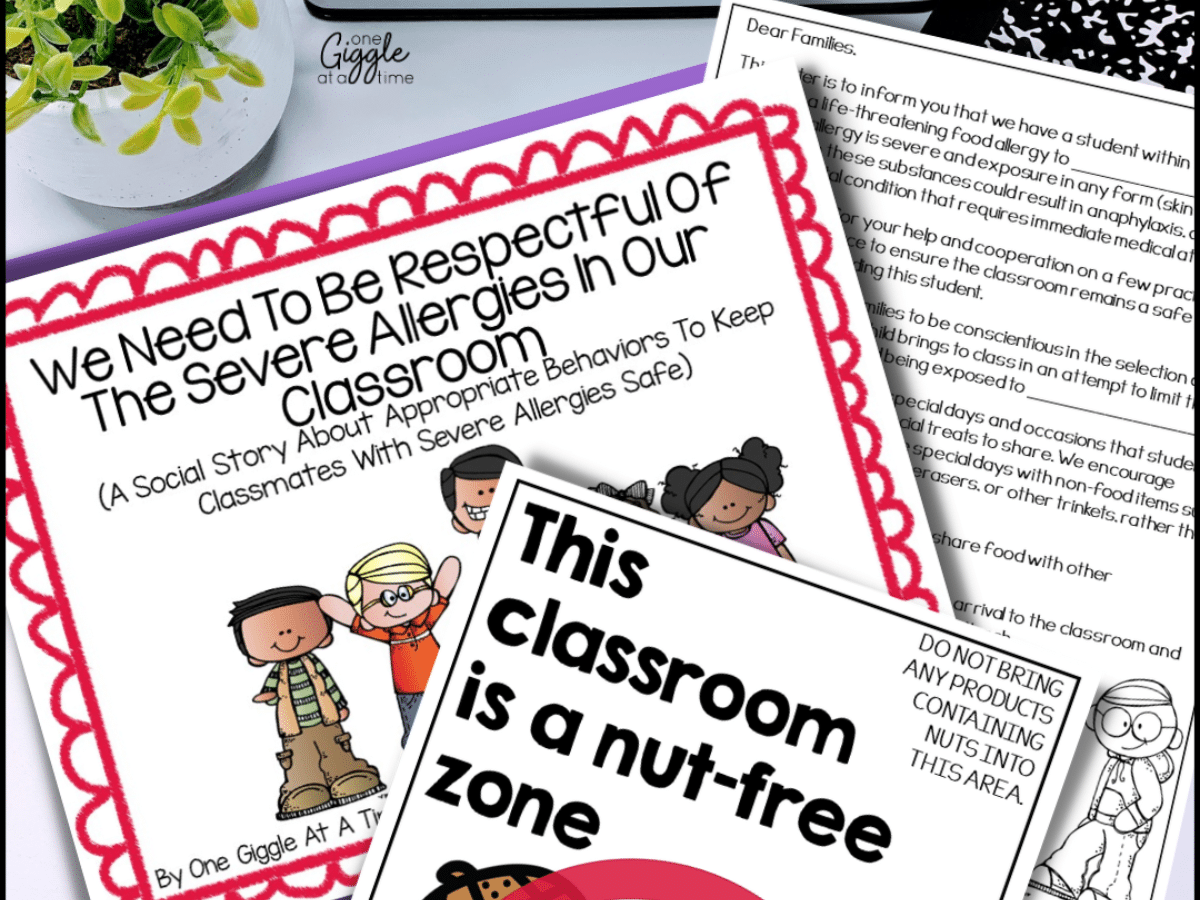
Also, send a letter home to all students’ families to make them aware of any modifications or protocols that need to be in place in your classroom to ensure the safety of the student with food allergies. Grab this FREE food allergy letter to send to your families this year!
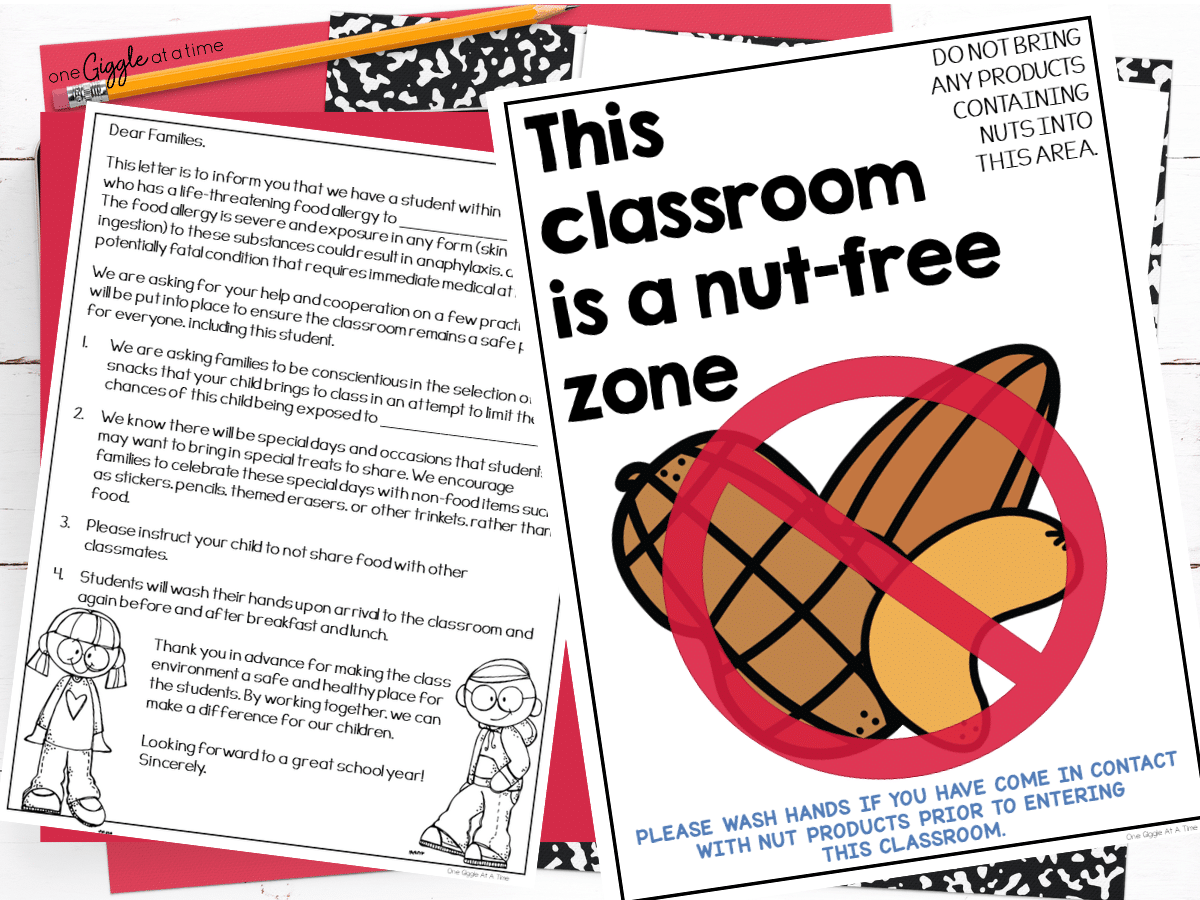
5. CREATE AND MAINTAIN A HEALTHY AND SAFE CLASSROOM COMMUNITY
To create and maintain a healthy and safe classroom environment for your students, post a sign outside your classroom door reminding guests and visitors of the practices in place to keep that child safe.*
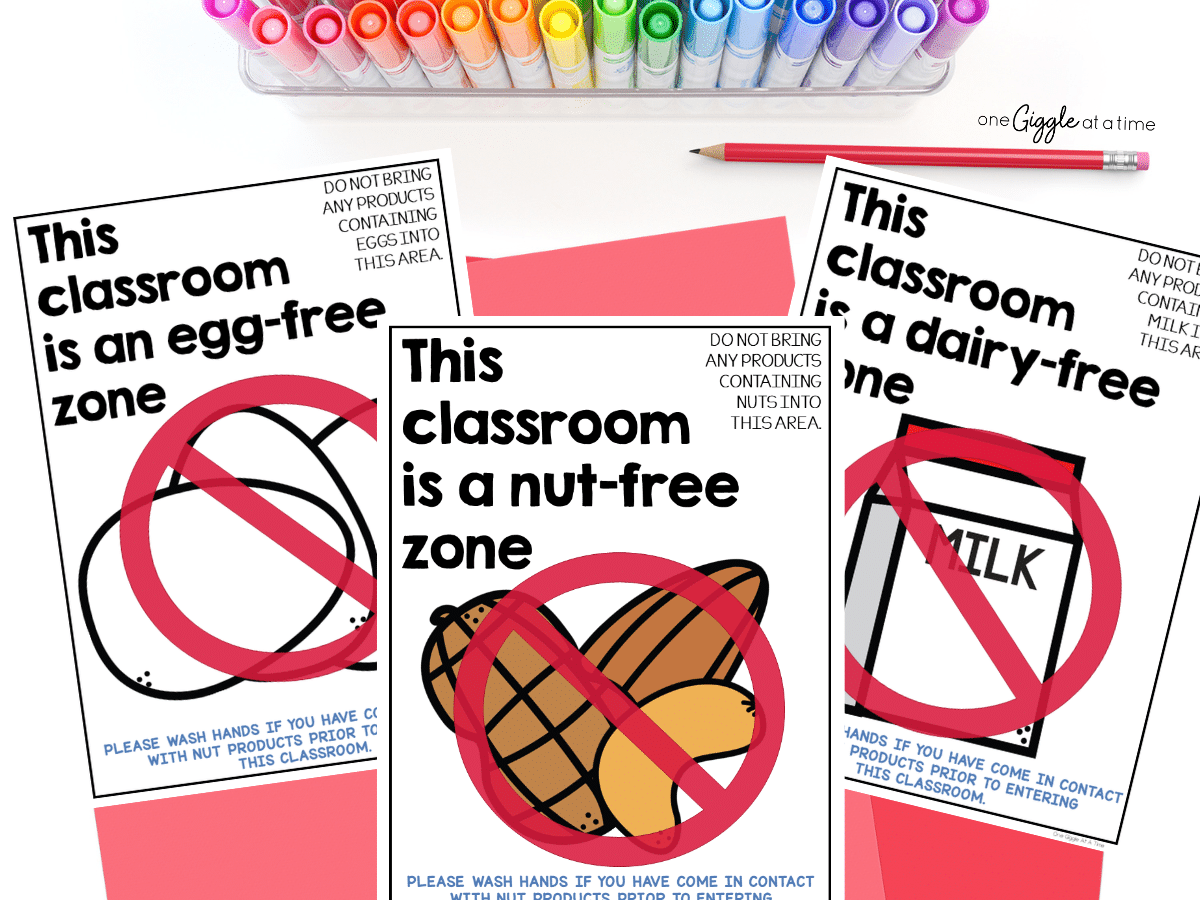
Get your own copy of these FREE food allergy posters for your classroom.
*Some food allergies only affect the child if the food is ingested, while others can be severe enough to cause a reaction by simply breathing in the substance or by having it come in contact with their skin. The severity of the allergy will determine if you need to post a sign or not. This is something that will need to be decided with the help of the school nurse, the family, and the child’s medical professionals.
Other Considerations
Class Parties
It is important to review the guidelines for food-related celebrations with parents and students periodically throughout the school year.
Classroom Activities
It is also important to avoid using allergens in any classroom activities including arts and crafts, counting, treats, parties, and science projects.
Rewards & Incentives
Instead of using food items for rewards and incentives, use nonfood items such as special privileges, extra recess, and small nonfood rewards.
Eating Times
Supervise any snacks eaten in the classroom setting to ensure children with severe food allergies are not exposed to their allergens.
It is also important to ensure a safe eating environment for students by sharing the child’s emergency/safety plan with the cafeteria staff.
Some possible options for safety are to seat the child at an allergy-free table* or at the end of the table where cafeteria staff can easily monitor the child.
*The use of allergy-free tables for breakfast and lunchtime will also depend not only on the severity of the student’s allergy but whether or not the family chooses to have the child sit at such a table. This also is something that will need to be decided with the help of the family and medical professionals.

IF YOU ARE IN NEED OF SIGNS FOR CAFETERIA TABLES YOU CAN GET THESE FREE SIGNS.
6. BE INCLUSIVE AND NOT EXCLUSIVE WHEN DEALING WITH A CHILD WITH A SEVERE ALLERGY IN YOUR CLASSROOM
Remember to speak to your food-allergic student (if age appropriate) or their family members prior to any events or celebrations where you suspect food or snacks may be involved. Work out a solution together.
Often times the family of the food-allergic child will be interested in sending in a collection of treats, special for their child to choose from, for when treats or food items are offered to the other students that their child cannot safely eat.
Try your best to have only allergen-safe foods at classroom celebrations. Especially for young children, it’s hurtful for the child with a food allergy to have to watch the other children enjoy a special treat, and not be able to have the same experience.
On that same note, remember to be careful about how you speak of the child with food allergies. Saying things to the class like “I would love for you all to have ice cream but we can’t because we have a food allergy in our classroom,” can have a detrimental impact on the child with the food allergy.
Food-allergic children can feel shame when their disease is holding back their class from having something special. It is also important to remember not to segregate the student during celebrations to keep them separated from allergens.
Keep things positive and talk about the special things your class gets to enjoy together! Be inclusive, not exclusive. Watch your classroom community flourish as you set the tone!
Grab all of the food allergy FREEBIES as a pack here to make things easier for you this year!
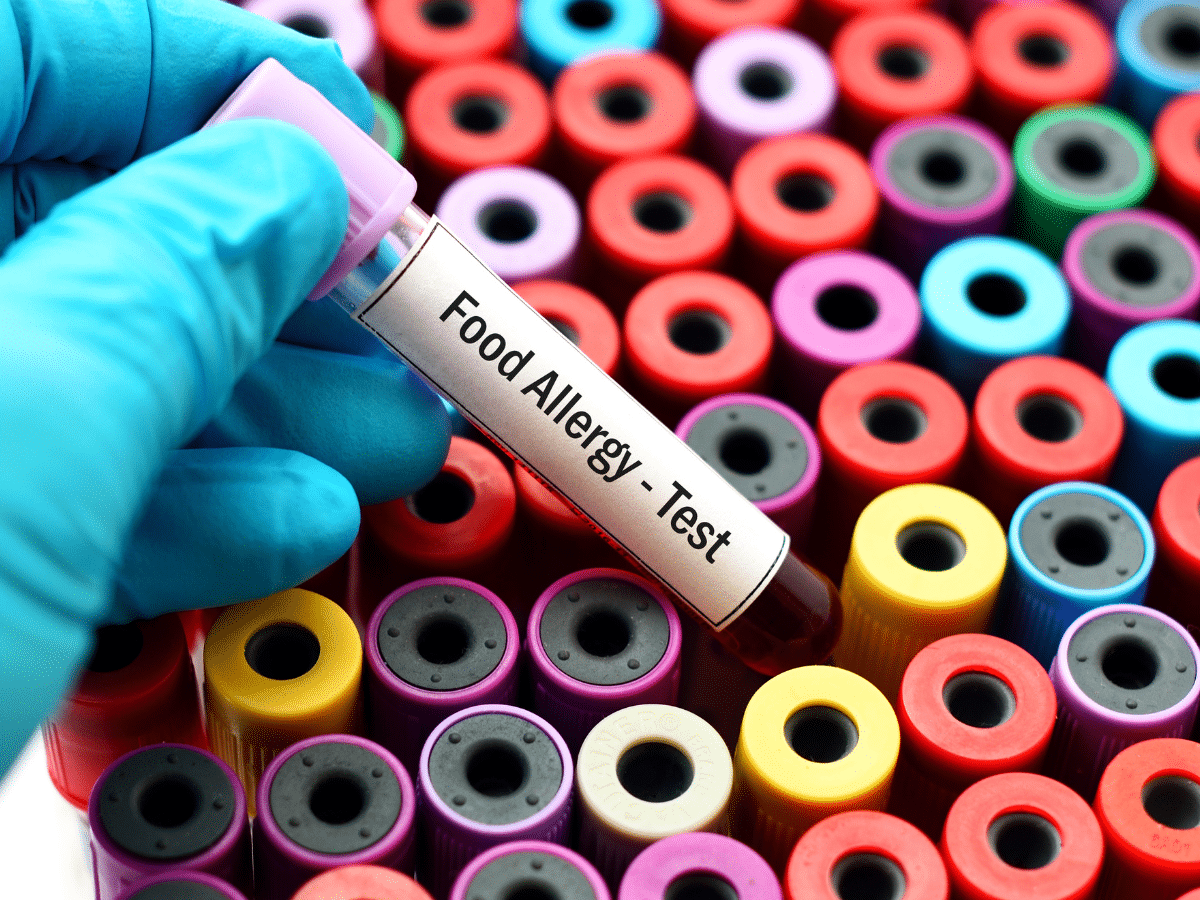
Thank YOU on behalf of all those kids will allergies out there, for caring to take the time to learn more about their lives! Every child is placed in your classroom for a reason, and this can and will be a great year for all!
Don’t forget to pin this post to refer to it later!
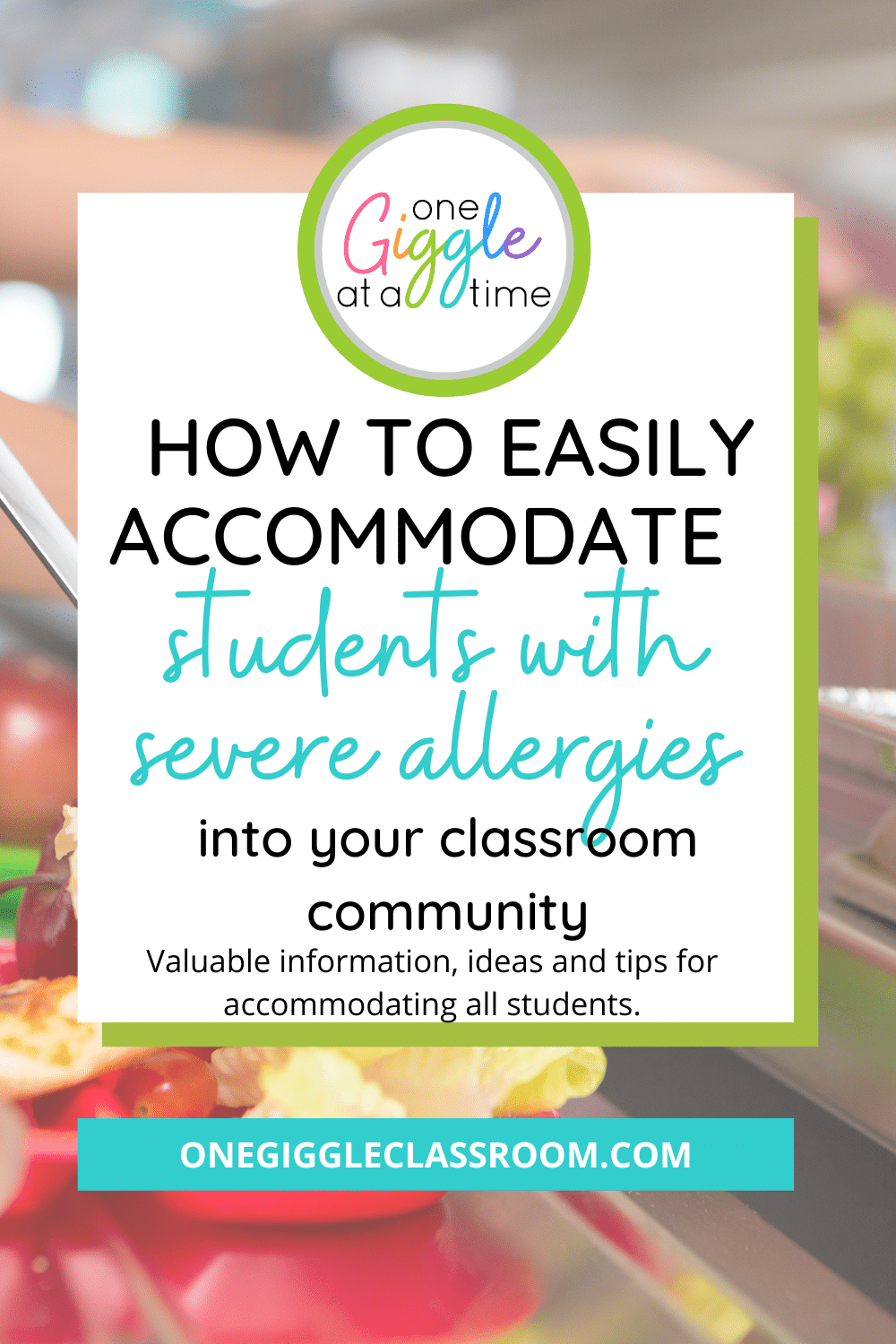
Other posts you may enjoy:
Celebrating the 100th Day of School In Style
Successful Tips How to Improve Student Behavior at Assemblies
10 Tips for a Successful Morning Routine to Reduce Chaos in the Elementary Classroom
MAKE MORNING ROUTINES IN YOUR CLASSROOM FUN AND ENGAGING WITH THESE
Free Morning Meeting Songs & Greetings
The perfect way to get students energized and ready to go in the mornings!
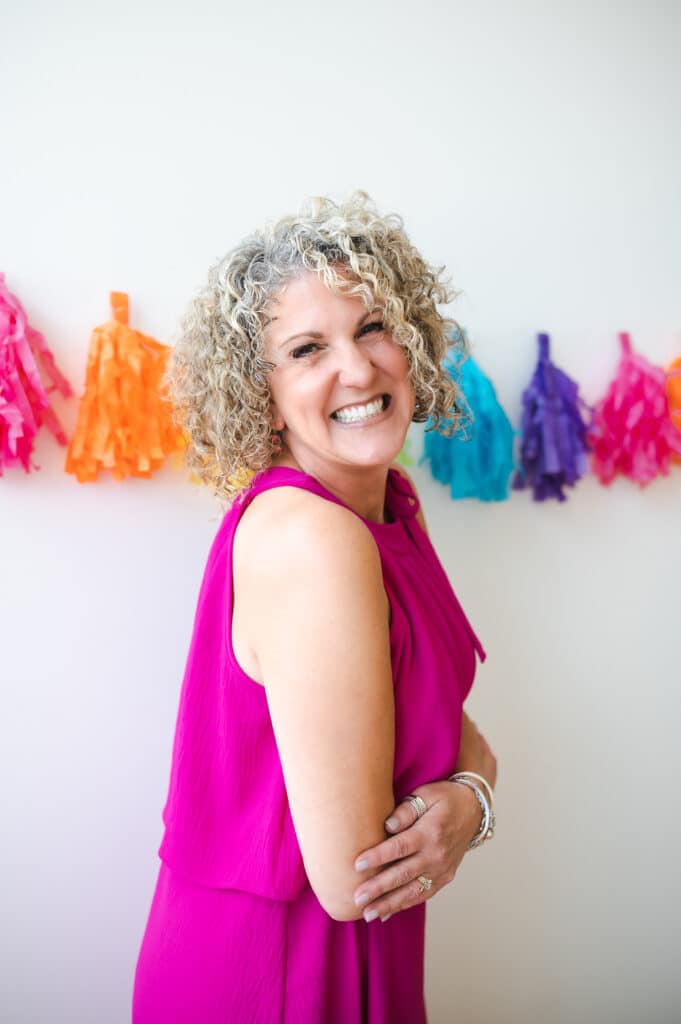

Diane Romo
Thank you for being here! I love sharing ideas with other teachers! If you are looking to enhance your teaching and build a positive classroom community, you have come to the right place!









